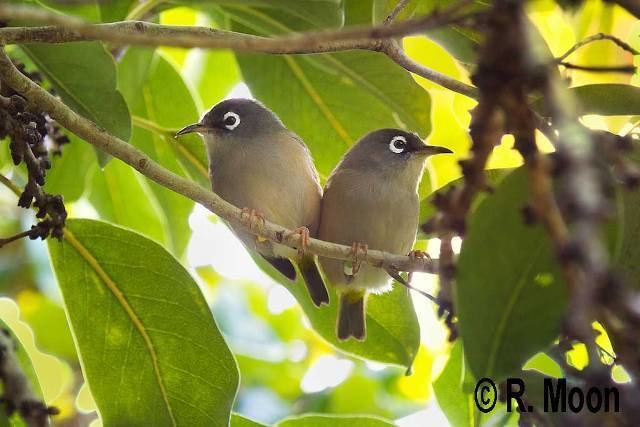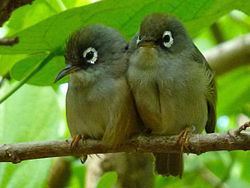Order Passeriformes | Phylum Chordata Family Zosteropidae Scientific name Zosterops chloronothos Rank Species | |
 | ||
Similar Bird, Mauritius grey white‑eye, Réunion grey white‑eye, White‑eye, Lesser white‑eyes | ||
The Mauritius olive white-eye (Zosterops chloronothos often mistakenly spelled Zosterops chloronothus) is a very rare passerine from the family of white-eyes (Zosteropidae). It is endemic to the island of Mauritius.
Contents

Description

This species was first described in 1817 by French ornithologist Louis Jean Pierre Vieillot as Zosterops chloronothos. It can reach a size of about 10 cm. The upperparts are a dull olive-green, the underparts a paler colour. The belly and vent have a yellow hue and the eyes are surrounded by a conspicuous white ring. The males and females are similarly coloured. The habitat of the Mauritius olive white-eye is the evergreen bushes and forests in the area of the Black River Gorges National Park and the Macchabée-Bel Ombre Biosphere Reserve. Its diet consists of nectar and insects.

During the breeding period, between September and March, two pale eggs are laid in a cup-shaped nest, which is well-hidden in the foliage. Males and females share brooding tasks. Normally only one juvenile is reared, which becomes fully fledged in about 14 days.
Threats

The Mauritius olive white-eye is one of the rarest birds on Mauritius. Difficult to observe, the birds inhabit an area of only 25 km². The main threats are introduced rats and crab-eating macaques, which destroy the nests. In only 27 years the population declined dramatically from 350 pairs in 1975 to only 120 pairs in 2002. Another reason for its rarity is that the Mauritius olive white-eye has evolved around the nectar of several endemic flowers from Mauritius. The introduction of other plant species has led to a decline in the required flowers and hence to severely decreasing numbers of the birds. Currently there is a monitoring by the Mauritian Wildlife Foundation for every found nest.


